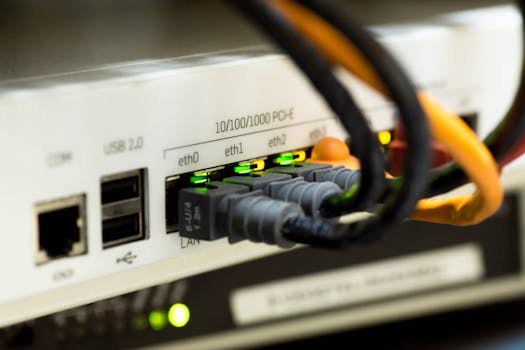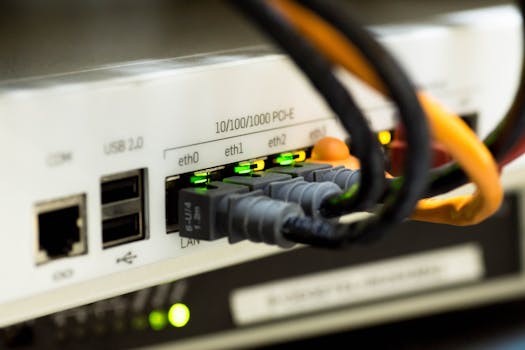The History of the Internet: From ARPANET to World Wide Web
The internet has become an integral part of our daily lives, allowing us to connect with people from all over the world, access information, and conduct business transactions with ease. But have you ever stopped to wonder how this vast network of interconnected devices actually works? In this article, we will take a deep dive into the basics of the internet, starting with its humble beginnings and evolution into the World Wide Web that we know today.
The history of the internet can be traced back to the 1960s when the United States Department of Defense created a network called ARPANET (Advanced Research Projects Agency Network). This network was initially designed for military purposes, to allow for communication and data transfer between different computers in the event of a nuclear attack. However, as technology advanced, ARPANET evolved into a more robust and interconnected network, laying the foundation for the modern internet.
In the 1980s, the National Science Foundation (NSF) created the first high-speed backbone network, connecting supercomputers and research facilities across the country. This network, known as NSFNET, played a crucial role in the development of the internet by providing a faster and more reliable way to transfer data. It also allowed for the creation of regional networks, connecting universities and research institutions, further expanding the reach of the internet.
But it wasn’t until the 1990s that the internet truly took off with the invention of the World Wide Web by British computer scientist Tim Berners-Lee. The World Wide Web, often referred to as the “web,” is a system of interconnected documents and resources that can be accessed through the internet. This revolutionary concept allowed for the creation of websites, web pages, and hyperlinks, making it easier for users to navigate and access information on the internet.
The introduction of web browsers, such as Netscape Navigator and Internet Explorer, made it even easier for people to access the web. These browsers allowed users to view web pages with text, images, and videos, making the internet a more visually appealing and interactive experience. This led to a surge in internet usage, with more and more people getting connected every day.
As the internet continued to grow, so did the need for a standardized way to access and share information. This led to the development of protocols, such as TCP/IP (Transmission Control Protocol/Internet Protocol), which allowed for the transfer of data between different devices on the internet. These protocols also enabled the creation of email, file transfer, and other essential services that we use on the internet today.
The 21st century saw a rapid expansion of the internet, with the introduction of high-speed broadband connections, wireless networks, and mobile devices. This made the internet more accessible and convenient, allowing people to stay connected wherever they go. The rise of social media platforms, such as Facebook and Twitter, also changed the way we use the internet, making it a hub for communication, entertainment, and information sharing.
Today, the internet continues to evolve and shape our world in ways we could have never imagined. With the introduction of new technologies, such as artificial intelligence and the Internet of Things, the internet is becoming even more integrated into our daily lives. It has also opened up new opportunities for businesses, education, and global connectivity.
In conclusion, the internet has come a long way since its inception, from a small military network to a global phenomenon that has revolutionized the way we live, work, and communicate. Its evolution into the World Wide Web has made it more accessible and user-friendly, allowing for the exchange of information on a scale never seen before. As we continue to rely on the internet for our daily activities, it is essential to understand its history and how it works to fully appreciate its impact on our world.
Understanding IP Addresses and Domain Names: The Building Blocks of the Internet

The internet has become an integral part of our daily lives, connecting us to a vast network of information and resources. But have you ever stopped to wonder how it all works? In this article, we will take a deep dive into the basics of the internet, specifically focusing on IP addresses and domain names – the building blocks of the internet.
First, let’s start with IP addresses. IP stands for Internet Protocol, and an IP address is a unique numerical label assigned to every device connected to the internet. It serves as the device’s identification number, allowing it to send and receive data over the internet. Without IP addresses, devices would not be able to communicate with each other, and the internet, as we know it, would not exist.
IP addresses are made up of four sets of numbers, separated by periods. Each set can have a maximum value of 255, and the numbers can range from 0 to 255. For example, 192.168.1.1 is a valid IP address. The first set of numbers identifies the network, while the last set identifies the specific device on that network. This system allows for over 4 billion unique IP addresses, which may seem like a lot, but with the increasing number of devices connected to the internet, we are quickly running out of available addresses.
To address this issue, a new version of IP addresses, called IPv6, was introduced. Unlike the current version, IPv4, which uses 32-bit addresses, IPv6 uses 128-bit addresses, allowing for trillions of unique addresses. However, the transition from IPv4 to IPv6 has been slow, and both versions are still in use today.
Now that we understand what IP addresses are let’s move on to domain names. Domain names are the human-readable version of IP addresses. Instead of typing in a series of numbers, we can simply type in a domain name, such as google.com, to access a website. Domain names are made up of two parts – the top-level domain (TLD) and the second-level domain (SLD). In google.com, “com” is the TLD, and “google” is the SLD.
The Domain Name System (DNS) is responsible for translating domain names into IP addresses. When you type in a domain name, your device sends a request to a DNS server, which then looks up the corresponding IP address and sends it back to your device. This process happens in a matter of milliseconds, allowing us to access websites quickly and efficiently.
One of the most crucial aspects of domain names is their registration. To ensure that no two websites have the same domain name, a system was put in place to regulate the registration process. The Internet Corporation for Assigned Names and Numbers (ICANN) is responsible for managing the registration of domain names and assigning them to specific IP addresses.
In addition to the technical aspects, domain names also play a significant role in branding and marketing. A well-chosen domain name can make a website more memorable and easier to find. It can also help establish a brand’s online presence and credibility.
In conclusion, IP addresses and domain names are the fundamental building blocks of the internet. They allow devices to communicate with each other and enable us to access websites with ease. As the internet continues to evolve, so will these essential components, ensuring that we can stay connected and access information at our fingertips.
Exploring Data Transmission: How Information Travels Across the Internet
The internet has become an integral part of our daily lives, allowing us to connect with people, access information, and conduct business transactions with ease. But have you ever stopped to wonder how this vast network of information actually works? In this article, we will take a deep dive into the basics of the internet and explore the process of data transmission, which is the backbone of the internet.
At its core, the internet is a global network of interconnected devices that communicate with each other using a standardized set of rules and protocols. These devices can range from computers, smartphones, tablets, and even smart home devices. The internet allows these devices to exchange information with each other, creating a seamless flow of data across the world.
The process of data transmission begins with the creation of data. This can be in the form of text, images, videos, or any other type of digital information. Once the data is created, it needs to be converted into a digital format that can be transmitted over the internet. This is where the role of binary code comes into play.
Binary code is a system of representing data using only two digits, 0 and 1. These digits are known as bits, and they form the building blocks of all digital data. Each bit represents a single piece of information, and when combined, they can create complex data such as images and videos. This binary code is then converted into electrical signals that can be transmitted over the internet.
The transmission of data over the internet is made possible by a technology called packet switching. In this process, the data is broken down into smaller units called packets. These packets contain the necessary information such as the source and destination addresses, as well as the actual data being transmitted. This allows for more efficient and reliable transmission of data, as the packets can take different routes to reach their destination and can be reassembled once they arrive.
Once the data packets are created, they are sent to the nearest router, which acts as a traffic controller for the internet. Routers are responsible for directing the data packets to their intended destination. They do this by reading the destination address on each packet and determining the most efficient route to send it. This process continues until the data packets reach their final destination.
The data packets travel through a series of routers, which are connected by high-speed cables and fiber-optic lines. These cables and lines form the physical infrastructure of the internet, also known as the backbone. The backbone is what allows for the fast and reliable transmission of data across the world.
As the data packets travel through the internet, they may encounter congestion or delays due to heavy traffic. To ensure that the data reaches its destination without any errors, a protocol called TCP (Transmission Control Protocol) is used. TCP breaks down the data into smaller chunks and sends them in a specific order. Once all the packets have reached their destination, they are reassembled in the correct order, ensuring that the data is transmitted accurately.
In conclusion, the internet is a complex network of devices, protocols, and infrastructure that work together to transmit data across the world. From the creation of data to its transmission through routers and cables, each step plays a crucial role in ensuring that we can access information and communicate with others seamlessly. Understanding the basics of data transmission is essential in comprehending the inner workings of the internet and how it has revolutionized the way we live, work, and connect with the world.



